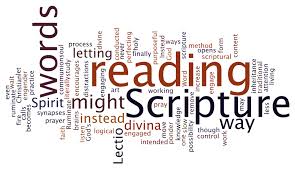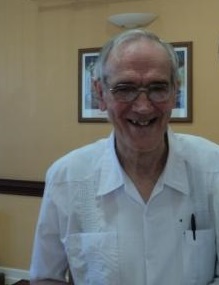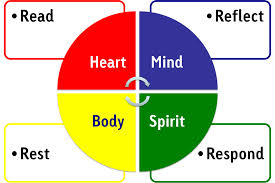People come together each Thursday morning from this and from neighbouring parishes to pray and study the scriptures under the guidance of Biblical Expert Fr Brendan Clifford OP. The method used is called Lectio Divina . ( Watch the video clip below as Fr Brendan explains how this group works.) Please return to view this video which we will load shortly.)
If you would like to attend this group, just drop and email moyrossparish@gmail.com or contact the office.
What is Lectio Divina ?
The practice of Lectio Divina as a way of praying the Scriptures has been a fruitful source of growing in relationship with Christ for many centuries and in our own day is being rediscovered by many individuals and groups. The Word of God is alive and active and will transform each of us if we open ourselves to receive what God wants to give us.
“Lectio Divina”, a Latin term, means “divine reading” and describes a way of reading the Scriptures whereby we gradually let go of our own agenda and open ourselves to what God wants to say to us. In the 12th century, a Carthusian monk called Guigo, described the stages which he saw as essential to the practice of Lectio Divina. There are various ways of practicing Lectio Divina either individually or in groups but Guigo’s description remains fundamental.
Four Stages to Lectio
He said that the first stage is lectio (reading) where we read the Word of God, slowly and reflectively so that it sinks into us. Any passage of Scripture can be used for this way of prayer but the passage should not be too long.
The second stage is meditatio (reflection) where we think about the text we have chosen and ruminate upon it so that we take from it what God wants to give us.
The third stage is oratio (response) where we leave our thinking aside and simply let our hearts speak to God. This response is inspired by our reflection on the Word of God.
The final stage of Lectio Divina is contemplatio (rest) where we let go not only of our own ideas, plans and meditations but also of our holy words and thoughts. We simply rest in the Word of God. We listen at the deepest level of our being to God who speaks within us with a still small voice. As we listen, we are gradually transformed from within. Obviously this transformation will have a profound effect on the way we actually live and the way we live is the test of the authenticity of our prayer. We must take what we read in the Word of God into our daily lives.
These stages of Lectio Divina are not fixed rules of procedure but simply guidelines as to how the prayer normally develops. Its natural movement is towards greater simplicity, with less and less talking and more listening. Gradually the words of Scripture begin to dissolve and the Word is revealed before the eyes of our heart. How much time should be given to each stage depends very much on whether it is used individually or in a group. If Lectio Divina is used for group prayer, obviously more structure is needed than for individual use. In group prayer, much will depend on the type of group. Lectio Divina may involve discussing the implications of the Word of God for daily life but it cannot be reduced to this. The movement of the prayer is towards silence. If the group is comfortable with silence, more time could be spent resting in the Word.



